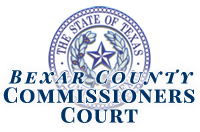In revisiting the memories of former students who attended Lincoln Elementary at the ceremony held at the WETC on February 13, 2024, , a unique perspective emerges—one that challenges conventional narratives about segregation. Rather than viewing segregation solely through the lens of division and inequality, their recollections paint a picture of a time when segregation seemed to foster a sense of peace and harmony within the school community. In exploring their experiences, we gain insight into a world that, while imperfect by contemporary standards, held its own virtues and merits.
At Lincoln Elementary, segregation was more than a mere administrative arrangement; it was a cornerstone of the school’s culture and identity. Students were divided along racial lines, with separate facilities and resources allocated to different groups. Yet, amidst this segregation, a sense of unity and camaraderie thrived—a testament to the resilience and adaptability of the human spirit.
For the students who attended Lincoln Elementary during this era, segregation provided a sense of belonging and security. They recall fond memories of shared experiences, friendships forged across racial divides, and a strong sense of community that transcended the barriers imposed by segregation. In this environment, differences were celebrated rather than vilified, and each student was valued for their unique contributions to the collective whole.
Segregation at Lincoln Elementary fostered an atmosphere of mutual respect and understanding among students. By acknowledging and embracing their racial identities, students were able to cultivate a sense of pride and empowerment that transcended the limitations imposed by segregation. Rather than viewing segregation as a source of division, they saw it as an opportunity to celebrate their heritage and culture in a supportive and nurturing environment.
In retrospect, the peace and harmony that characterized Lincoln Elementary’s segregated community were not accidental but intentional. Educators and administrators worked tirelessly to create an inclusive and welcoming environment where every student felt valued and respected. Through their efforts, they demonstrated that segregation, when approached with empathy and understanding, could foster unity and cooperation among diverse groups.
As we reflect on the experiences of those who attended Lincoln Elementary, we are reminded of the complexities of segregation and its multifaceted impact on individuals and communities. While it may have seemed like a contentious issue from an outside perspective, for those who lived it, segregation was a source of strength and solidarity—a testament to the resilience of the human spirit in the face of adversity.
The world described by former students of Lincoln Elementary may seem foreign to us today, but its lessons are timeless. By embracing the virtues of unity, understanding, and mutual respect, we can strive to create a more inclusive and equitable society—one where differences are celebrated and all individuals are given the opportunity to thrive. In doing so, we honor the legacy of those who came before us while charting a course towards a brighter and more harmonious future.











